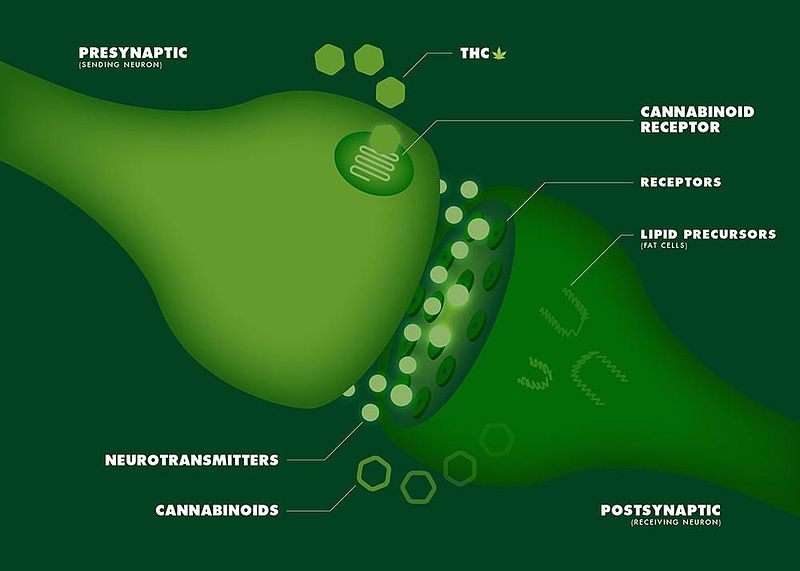Introduction

(endo)cannabinoid receptors
Feeling high after a massage? Receptors for the body’s own cannabinoid substances (endocannabinoids) can be found in fascia according to a recent research study from the Stecco group at the University of Padova in Italy.
Endocannabinoids
Endocannabinoids, usually found in the nervous system, are the body’s own substances that have biological effects similar to those of marijuana. Studies have shown that stimulating these nervous system endocannabinoid receptors, CB1 (cannabinoid receptor 1) and CB2 (cannabinoid receptor 2), can relieve pain and suppress inflammation. For example, research has demonstrated that marijuana use by patients with fibromyalgia can lower pain and improve health-related quality of life. This led the researchers to suspect that endocannabinoid receptors might exist in tissues other than the nervous system.
Their presence has been stated to exist in myofascial tissue, suggesting that the endocannabinoid system may help resolve myofascial trigger points. However, the expression of endocannabinoid receptors in human fascia has not yet been confirmed. This study published in the European Journal of Histochemistry, is the first study to establish their presence in fascial tissue.
Endocannabinoid Receptors Found in Fascial Tissue
The researchers extracted fascia latae tissue, the deep fascia that encircles the thigh (of which the iliotibial band is a thickening in the lateral thigh), from 11 volunteers who had orthopedic surgery, and then isolated the main cell type of the fascia, called fibroblasts. They found both types of receptors, CB1 and CB2, in these cells.
Endocannabinoid Receptors and Fascial Pain
The authors stated: “The presence of CB1 and CB2 receptors in fascial fibroblasts suggests their possible role in modulation of fascial pain. The fascial pain is usually related to a fascial inflammation and/or a fascial fibrosis, and both could be related to an alteration of the endocannabinoid system. Indeed the activation of CB1 and CB2 receptors is able to suppress pro-inflammatory cytokines such as IL-1beta e TNF-alpha and to increase anti-inflammatory cytokines, and provide an anti-fibrotic activity. ”
The authors also hypothesised a possibility that the endocannabinoid system inside the deep fasciae is stimulated during manipulative treatments and exercises. A previous study by McPartland et al. demonstrated that after osteopathic manipulation treatment, the serum level of anandamide (a type of neurotransmitter considered to be an endocannabinoid) increases 168% over pre-treatment levels. And Gamelin et al. demonstrated that regular exercise is able to modify the tissue levels of endocannabinoids.
The authors added that “It is also known that the connective tissue is one of the principal targets of stretching, causing the remodelling of the cytoskeleton of the fibroblasts and a modulation of the inflammation-regulation mechanisms within connective tissue. Consequently, we can suppose that specific exercises or fascial treatments would be able to stimulate the fascial fibroblasts and consequently to modulate the endocannabinoid system and the release of anti-inflammatory cytokines.”
Application
Confirmation of the presence of endocannabinoid receptors in fascial tissue, and the ability to stimulate these receptors with manual and movement therapies, greatly bolsters the efficacy of manual and movement therapies as well as our understanding of the mechanism by which these therapies work.
This blog post article was created in collaboration with TerraRosa.com.au.

